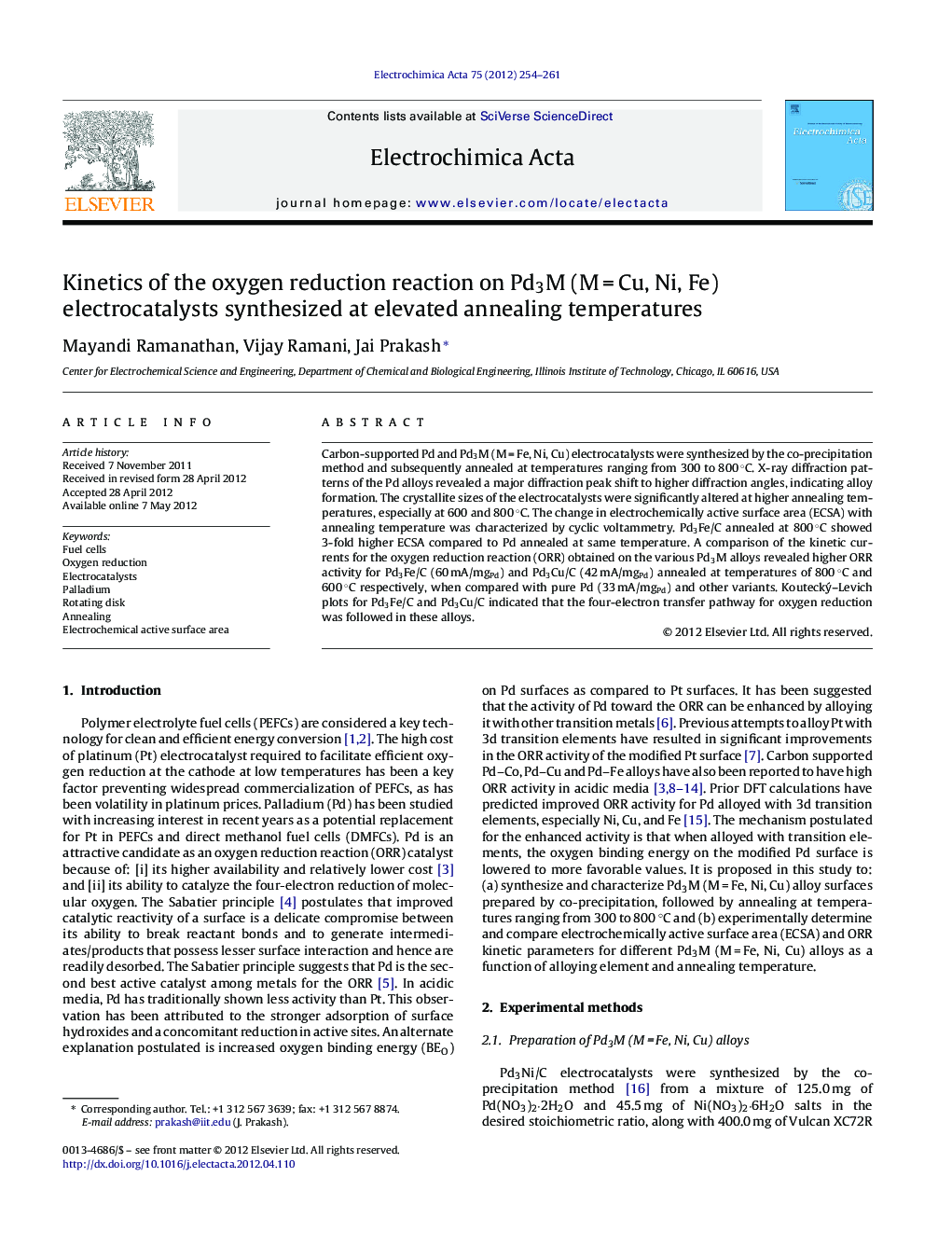| Article ID | Journal | Published Year | Pages | File Type |
|---|---|---|---|---|
| 188514 | Electrochimica Acta | 2012 | 8 Pages |
Carbon-supported Pd and Pd3M (M = Fe, Ni, Cu) electrocatalysts were synthesized by the co-precipitation method and subsequently annealed at temperatures ranging from 300 to 800 °C. X-ray diffraction patterns of the Pd alloys revealed a major diffraction peak shift to higher diffraction angles, indicating alloy formation. The crystallite sizes of the electrocatalysts were significantly altered at higher annealing temperatures, especially at 600 and 800 °C. The change in electrochemically active surface area (ECSA) with annealing temperature was characterized by cyclic voltammetry. Pd3Fe/C annealed at 800 °C showed 3-fold higher ECSA compared to Pd annealed at same temperature. A comparison of the kinetic currents for the oxygen reduction reaction (ORR) obtained on the various Pd3M alloys revealed higher ORR activity for Pd3Fe/C (60 mA/mgPd) and Pd3Cu/C (42 mA/mgPd) annealed at temperatures of 800 °C and 600 °C respectively, when compared with pure Pd (33 mA/mgPd) and other variants. Koutecký–Levich plots for Pd3Fe/C and Pd3Cu/C indicated that the four-electron transfer pathway for oxygen reduction was followed in these alloys.
